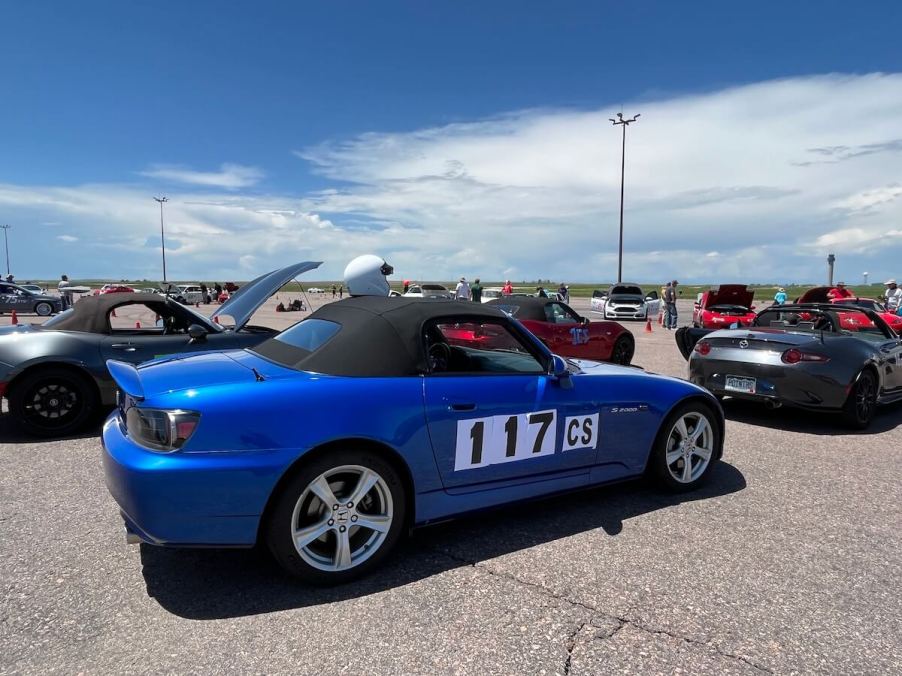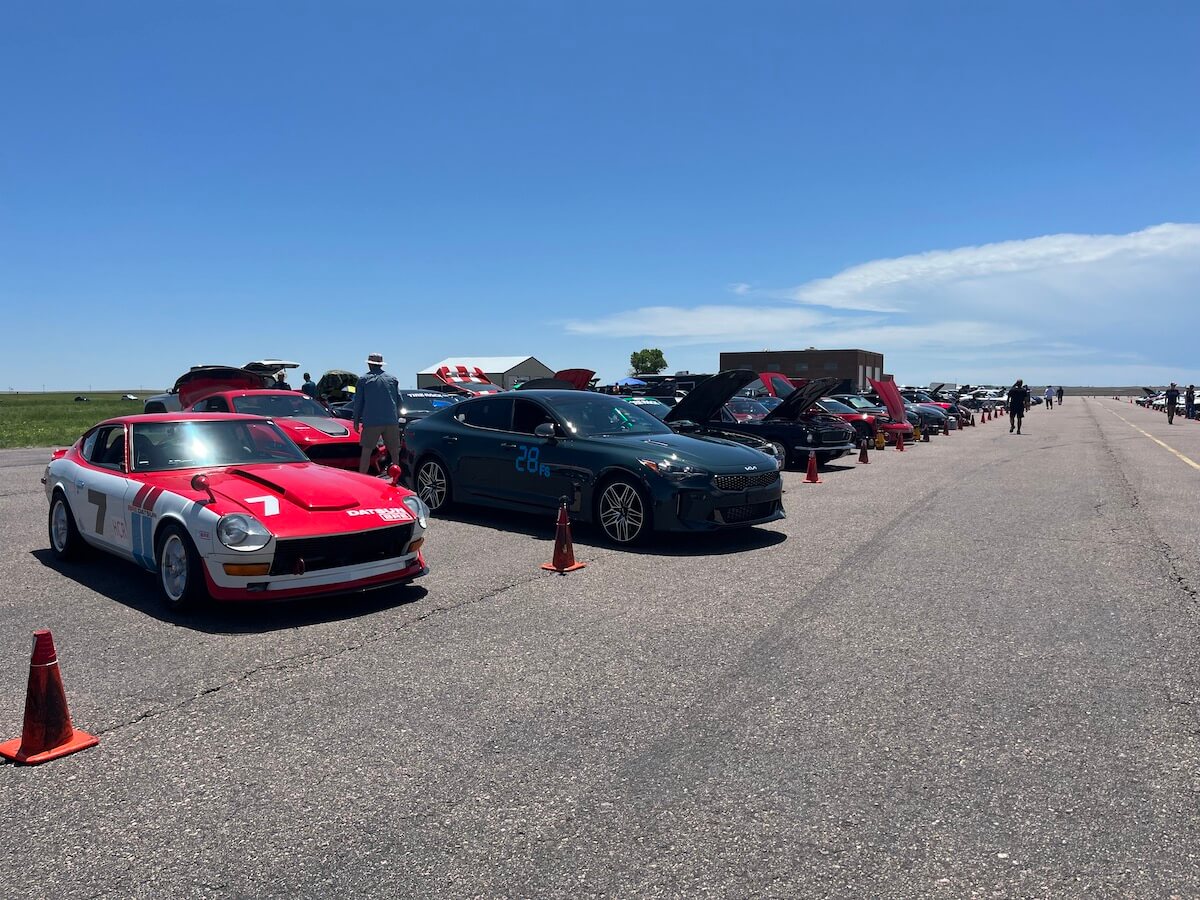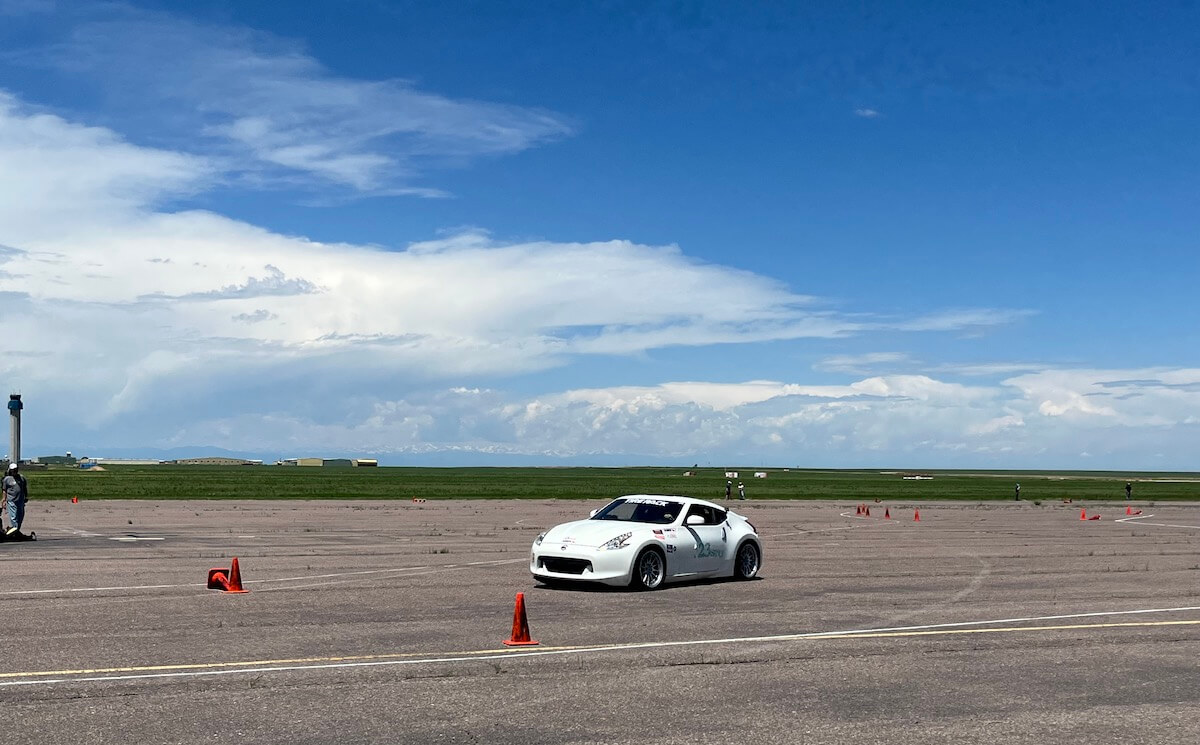
Autocross Racing In a Honda S2000 Was Stressful But Successful
I felt a little nervous as I strapped on my helmet and folded myself into my 2008 Honda S2000. As I drove toward the starting line, my hands got clammy as I peered down on the car’s temperature gauge to ensure the engine was warmed up enough. It was. I had waited all day for this moment, and my nervous excitement grew as I watched the car in front of me rev its engine and take off into the first corner of the track.
This was my first autocross event. I didn’t want to blow it by hitting a cone or getting lost on the track. As I inched my way up to the line and kept an eye out for the worker’s signal for me to go, all was forgotten. In an instant, he gave me the signal, I revved up the car’s engine, slipped the clutch, and I was off.
What is autocross racing?

Autocross is a form of car racing where the drivers navigate through a course formed by traffic cones in an effort to cross the finish line in the lowest time. These events are typically held in a large parking lot or an airport tarmac, so there’s plenty of space if a car goes off the track. Additionally, only one car is allowed on the track at a time, which increases the safety of the autocross event.
The only thing drivers need to worry about is hitting a cone, which can add two seconds to the lap time. Otherwise, autocross racing – or autocrossing – is mostly about driving smoothly and technically. It was my first event, and I learned quickly as the day went on.
The first part of an autocross race requires working

I signed up for an event with the Rocky Mountain Solo chapter of the Sports Car Club of America (SCCA). Those driving in the event are required to work part of the event to help the staff keep everything running smoothly all day. It also keeps the $50 entry fee low since the club doesn’t have to pay people to work the event. It sounded a little weird at first, but after doing it, I think it’s a fair tradeoff.
The event that I went to consisted of three heats (or race groups). After I arrived at the Colorado Air and Space Port, I registered and was notified that I would be working the first heat and racing on the third heat. At the time, I had no idea what that meant. Fortunately, I quickly found out that asking random people what to do and where to go is helpful.
Everyone there was willing to help out a newbie, as most of them were seasoned vets in the sport. For my working session, I was in charge of being a notetaker for Corner 1. I reported to Dave, the “corner captain,” the whole time during the heat. He called out the numbers and classes on the cars as they drove by, and my job was to write them down and tally up how many cones each car hit, if any.
“53, AS! Zero!” Dave would call out to me, and I would mark it on the list. It was an easy job, but the hardest part was standing in the sun for two hours.
There were two other workers picking up any knocked-over cones. In total, there were four corners on the track and four workers at each one to keep everything running properly. Every car was supposed to get five runs for the first heat, but it ended abruptly due to a large oil spill from a leaking car.
After that, the second heat of cars was up to race, but they only got three runs apiece.

It was my turn to run my Honda S2000

While waiting another hour and a half for the second heat to finish, I met a few more people and chatted it up with Dave. I wondered if they could tell that I was nervous. Most likely.
But no one seemed to point it out and instead gave me pointers. One person said, “Just find your way through the track and don’t hit any cones,” while another advised me to “keep it smooth and consistent.”
It sounds easy in theory, but it’s harder when you’re trying to drive as quickly as possible through really tight turns. Also, it doesn’t help when you feel like everyone else is watching you because you have the only S2000 at the event, and its blue paint makes it stick out like a sore thumb in a sea of Mazda Miatas.
All of that nervousness went away when the starting line worker gave me the signal. I revved up the engine and took off as fast as I could around the first corner. “Shift, roll onto the gas, then brake early,” I thought as I exited the first corner and entered the second. I turned wide around the big bend of the second corner, but it wasn’t wide enough, and I botched the entrance going into the third corner – the slalom.
My car bobbed and weaved through the cones as I steered left and right quickly. I hammered the throttle to get into the last corner, a sharp right-hander that I had to brake for and then floored it across the finish line. Fortunately, the Michelin Pilot Sport All Season 4 tires held up well and gripped better than expected. In hindsight, I probably could have pushed them harder. My first lap time was over in 45.2 seconds.
For reference, the fast cars in the day were finishing the course in 35-37 seconds, and my new friend Dave finished his first lap in 40 seconds flat. In comparison, I was lapping the course at a snail’s pace.
I didn’t have any shame, though, since it was my first time, and I was there for fun. My subsequent runs finished in 46 and 45 seconds, respectively. Again, I was slow, but at least I was consistent. Also, I didn’t get lost on the track or hit any cones, so I would consider it a success.

Autocross racing is highly recommended
Ultimately, my first autocross event was stressful because I had no idea what to do walking into it. However, that uneasiness melted away throughout the day as everyone there pointed me in the right direction. At the end of the day, I was dirty, sweaty, and relieved.
Also, I would recommend that anyone looking to put their car to use without getting into trouble should try autocross racing at least once. You may get a slow time like me (or not), but having fun is what it’s all about.









